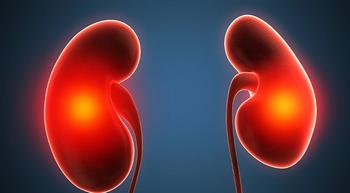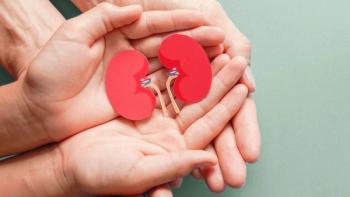Higher body mass index (BMI) after diagnosis is linked to better survival outcomes in patients with localized renal cell carcinoma (RCC), while significant weight loss predicts poorer prognosis, according to study findings presented in a poster session at the 2025 International Kidney Cancer Symposium.
The research suggests that monitoring BMI changes during survivorship could help identify high-risk patients and guide supportive care strategies, though weight gain alone does not appear to provide additional survival benefit, indicating that the obesity paradox is not fully explained by body weight.
At two years after diagnosis, patients with a BMI of 35 or higher had a much lower risk of death and a lower risk of their disease returning or worsening compared with those whose BMI was under 25. At three years after diagnosis, people with a BMI of 35 or higher continued to have a substantially lower risk of death and a lower risk of disease progression. Each 1-unit increase in BMI was associated with about a 25% lower risk of death and a 15% lower risk of disease progression.
Glossary
Overall survival: time from diagnosis or start of treatment until death from any cause
Disease-free survival: time after treatment during which a patient shows no signs of cancer
Hazard ratio: a measure comparing the risk of an event, such as death or disease progression, between two groups over time
Confidence interval: a range of values that likely contains the true effect or risk, showing the precision of a result
At the time of diagnosis, patients with a BMI of 35 or higher also had a lower risk of death and a lower risk of their disease returning or worsening compared with those with a BMI under 25.
Two years after diagnosis, weight loss strongly predicted poor outcomes. Losing more than 10% of body weight was linked with a much higher risk of death and a higher risk of disease progression. Losing 5% to 10% of body weight was tied to a higher risk of death. Weight gain did not show any survival benefit.
Three years after diagnosis, these weight-loss patterns remained consistent. Losing more than 10% of body weight was associated with a much higher risk of death and a much higher risk of disease progression, and losing 5% to 10% of body weight was linked with a higher risk of death and a higher risk of disease progression. Weight gain continued to show no benefit.
Patient Characteristics and Study Methods
A total of 1,414 patients were included in the study, with a median age of 61.7 years. The median BMI for the cohort was 29.8 kilograms per square meter. Regarding BMI categories, 13.7% were classified as normal weight, 30.3% were overweight, 25.4% were obese 1, and 30.6% were categorized as obese 2 to 3.
This multicenter, retrospective study gathered information from the Oncology Research Information Exchange Network (ORIEN) on patients diagnosed with a specific cancer (RCC) between 2020 and 2022. The longest follow-up period for any patient was about 15 years. Researchers focused on BMI as a key factor, measuring it at diagnosis and again two and three years afterward.
Patients were sorted into five groups based on how their weight changed: a loss greater than 10%, a loss between 5% and 10%, a stable weight change of 5% or less, a gain between 5% and 10%, or a gain greater than 10%.
The study's main goals were to measure two outcomes: overall survival and disease-free survival. To ensure the findings were accurate, they used advanced statistical models that produced hazard ratios and 95% confidence intervals. These results were adjusted to account for other factors that affect survival, including age, sex, race and ethnicity, cancer stage, alcohol consumption and cancer type (histology).
Reference
- “Post-Diagnosis Body Mass Index (BMI) Change on Survival in Localized Renal Cell Carcinoma” by Dr. Monica Sarkar, et al., International Kidney Cancer Symposium.
For more news on cancer updates, research and education, don’t forget to subscribe to CURE®’s newsletters here.






